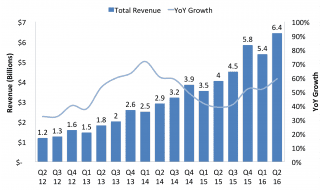
Anyone who wants to trade stocks online should do a decent amount of research and practice trading before spending real money. There are dozens of pitfalls for prospective traders. The good news is that most of them can be avoided if you understand a few simple strategies. Even if you’ve spent time buying and selling stocks online, it helps to review the most common bits of advice handed out by seasoned professionals. You can find books full of complicated systems and endless rules, but the following five guidelines will suffice for beginners:
Minimize Brokerage Fees
Spend several hours, at least, shopping for a broker who offers all the amenities you need and who doesn’t charge high commissions. Fees vary widely among the top platforms so you can often snag significant savings just by doing a bit of comparison shopping. Read reviews, check out websites, test-drive a few of the brokers that appeal to you and then make an informed decision based on quality and price.
Learn the Pattern Day Trader Rule
Here’s where you really need to keep track of your buying and selling. Lots of people run into trouble with the pattern day trading rule without realizing it. In its simplest form, it states that you will be deemed a pattern day trader if you make four or more stock trades between the opening and closing bells of a single session, within a 5-day period.
What happens if you run afoul of this strict guideline? First off, you’ll be unable to do any buying or selling for a fixed period of time, usually 90 days, unless you put $25,000 into your brokerage account. Don’t panic if you accidentally get caught because most of the platforms will give you a warning the first time.
Write Down Your Trading Rules
One of the oldest, and most effective, adages for market enthusiasts says that you’ll have a better shot at long-term success if you write down all your trading rules and follow them without exception. That means not hanging in with a failing position in the hopes that there will be a turn-around. Once the price falls below your exit point, get out. Likewise, if you have a rule that says to never stay in a trade longer than one week if the high or low exit points have not been reached, then be sure to sell the position if it’s just moved sideways for five straight days.
Use Stop-Loss Orders

Placing stop-loss orders on every position is a wise, simple and effective way to preserve your capital. Where to place the order? Select a price somewhere below your entry that is in line with whatever your written rules say. Many people place stop-loss orders near the 10 percent loss point. For example, if you purchase stock XYZ at $50 per share, the stop would kick in at $45.
Avoid Early and Late Trading Sessions
New and experienced professionals typically avoid entering into any positions during the first and last half-hours of the day. Those time frames represent some of the most volatile activity due to massive infusion, and withdrawal, of institutional money.




